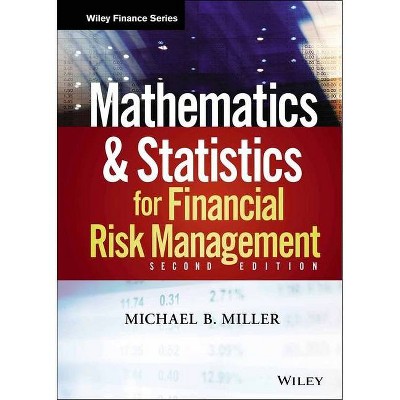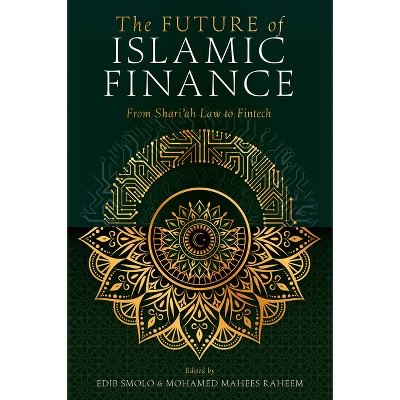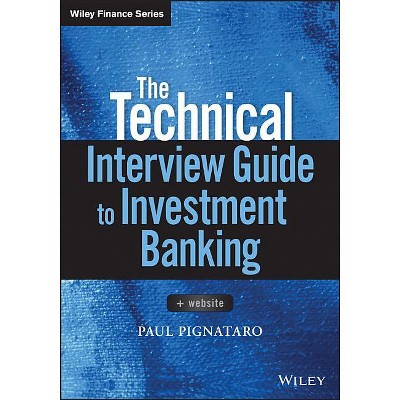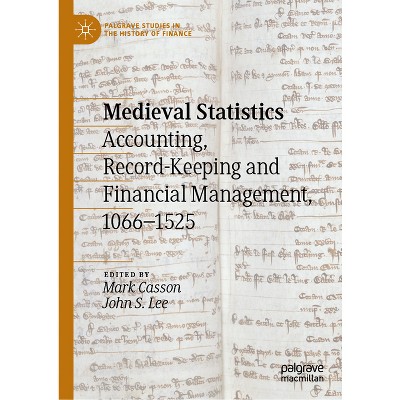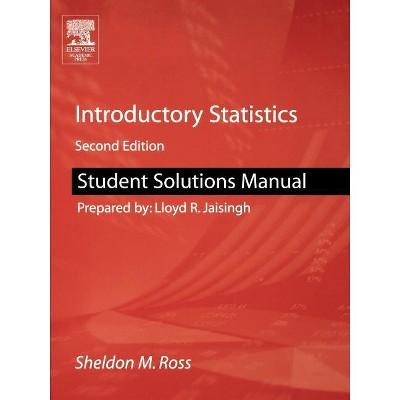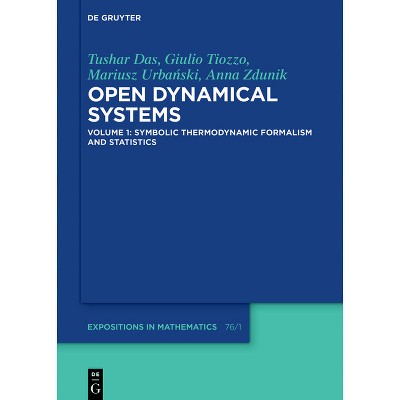Introductory Mathematics and Statistics for Islamic Finance, + Website - by Abbas Mirakhor & Noureddine Krichene (Paperback)

About this item
Highlights
- A unique primer on quantitative methods as applied to Islamic finance Introductory Mathematics and Statistics for Islamic Finance + Website is a comprehensive guide to quantitative methods, specifically as applied within the realm of Islamic finance.
- About the Author: ABBAS MIRAKHOR is first Chair of Islamic Finance at the International Center for Education in Islamic Finance (INCEIF).
- 608 Pages
- Business + Money Management, Economics
Description
Book Synopsis
A unique primer on quantitative methods as applied to Islamic financeIntroductory Mathematics and Statistics for Islamic Finance + Website is a comprehensive guide to quantitative methods, specifically as applied within the realm of Islamic finance. With applications based on research, the book provides readers with the working knowledge of math and statistics required to understand Islamic finance theory and practice. The numerous worked examples give students with various backgrounds a uniform set of common tools for studying Islamic finance.
The in-depth study of finance requires a strong foundation in quantitative methods. Without a good grasp of math, probability, and statistics, published theoretical and applied works in Islamic finance remain out of reach. Unlike a typical math text, this book guides students through only the methods that directly apply to Islamic finance, without wasting time on irrelevant techniques. Each chapter contains a detailed explanation of the topic at hand, followed by an example based on real situations encountered in Islamic finance. Topics include:
- Algebra and matrices
- Calculus and differential equations
- Probability theory
- Statistics
Written by leading experts on the subject, the book serves as a useful primer on the analysis methods and techniques students will encounter in published research, as well as day-to-day operations in finance. Anyone aspiring to be successful in Islamic finance needs these skills, and Introductory Mathematics and Statistics for Islamic Finance + Website is a clear, concise, and highly relevant guide.
From the Back Cover
Praise for Introductory Mathematics and Statistics for Islamic Finance
"The authors have done a great service for those who are undertaking quantitative analysis, empirical research, and developing models in Islamic economics and finance. The strength of the book lies in the range of topics covered the richness of its logical presentation, easy to follow examples and most importantly, simplification of complex mathematical and statistical concepts. This is an essential book for the library of any researcher of Islamic finance."
--ZAMIR IQBAL, Lead Investment Officer, The World Bank, Washington, DC, USA
"This book is a very accessible introduction to mathematical and statistical modelling in Islamic finance. With minimum prerequisites for reading, it presents a clear and concise exposition of the fundamental analytical tools in economics and illustrates their applications to important topics in Islamic finance. Introductory Mathematics and Statistics for Islamic Finance is a timely and major contribution to the collective efforts currently underway to close the wide gap between theoretical and empirical research in Islamic finance. The authors are among the leading thinkers and voices in Islamic finance, and write from a depth of experience."
--NABIL MAGHREBI, Professor of Finance, Graduate School of Economics, Wakayama University, Japan Center for the Study of Finance and Insurance, Osaka University
"This book is an important contribution and a must-read for every student seeking knowledge in this particular area. It is also undeniably a great resource for lecturers, researchers and practitioners who are interested in Islamic finance and its conceptualization. The book provides useful mathematical and statistical tools for Islamic finance and presents a wide range of applications in a concise, relevant and pedagogical way."
--ADAMA DIEYE, Central Bank of the West African Economic and Monitory Union and Advisor in the Cabinet Ministry of Economy and Finance of Senegal
"A book written by two senior and well respected Islamic economists that will have an important impact in the field. This book will equip a new generation of researchers with quantitative muscles. Learning Islamic finance using another language (Mathematics and Statistics) is a great way to push you towards mastering the field. Since Mathematics and Statistics are the language of logic, this book is expected to enhance and deepen the readers' understanding of Islamic finance."
--ABDULLAH Q. TURKISTANI, Dean, Islamic Economics Institute King Abdulaziz University, Saudi Arabia
"There are several books in the market on both Mathematics and Statistics. However, Introductory Mathematics and Statistics for Islamic Finance is unique in many respects. It addresses a specific target group: researchers and students in the field of Islamic finance--an industry with an impressive growth record and tremendous potential. This book puts the fundamental requirements for quantitative research in a simple yet rigorous enough style to meet professional research standards. Its selection of the most relevant topics from a broad array of computational mathematics and statistics, and use of explanatory examples for direct application in Islamic finance make this book handy and most practical."
--MUNAWAWAR IQBAL, Chief Editor, Journal of King Abdulaziz University: Islamic Economics, and Former Chief of Research, Islamic Banking Division, Islamic Research and Training Institute, Islamic Development Bank, Jeddah
About the Author
ABBAS MIRAKHOR is first Chair of Islamic Finance at the International Center for Education in Islamic Finance (INCEIF). Formerly, he served as Dean of the Executive Board of the International Monetary Fund (IMF) and as Executive Director representing Afghanistan, Algeria, Ghana, Iran, Morocco, Pakistan, and Tunisia.
NOUREDDINE KRICHENE taught Islamic finance at INCEIF, Malaysia, was an economist with the International Monetary Fund, and acted as an advisor to the Islamic Development Bank in Saudi Arabia.
Shipping details
Return details
Trending Non-Fiction






